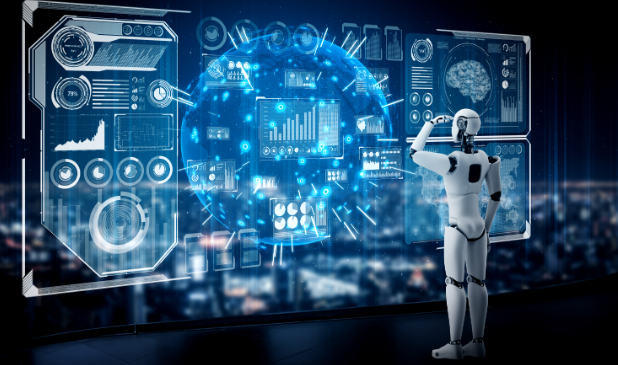

Space exploration is one of humanity’s most challenging and exciting endeavors. This requires a combination of scientific knowledge, technological innovation and human courage. However, sending humans and spacecraft into vast and unknown regions of the universe involves many limitations and risks. That’s why artificial intelligence (AI) is critical to discovering new worlds and expanding our horizons
Artificial intelligence is a branch of computer science that seeks to create machines capable of performing tasks that typically require human intelligence and systems such as reasoning, learning, decision-making, and problem solving. Artificial intelligence can help us overcome some challenges and provide more opportunities for space exploration. Here are seven amazing applications of artificial intelligence in space exploration:
Artificial intelligence can assist astronauts in completing various tasks on a spacecraft or space station , including monitoring systems, controlling equipment, conducting experiments, or providing companionship. For example, CIMON is an artificial intelligence assistant that can interact with astronauts on the International Space Station through voice and facial recognition. CIMON can help astronauts handle procedures, answer questions or play music. Another example is Robonaut, a humanoid robot capable of working alongside or replacing astronauts on dangerous or routine missions
By using previous missions and Simulating data, artificial intelligence can more effectively help design and plan space missions. AI can also optimize mission parameters such as launch date, orbit, payload and budget. For example, ESA has developed an artificial intelligence system called MELIES that can help mission analysts design interplanetary trajectories using genetic algorithms
Application of artificial intelligence Enables spacecraft to operate autonomously without human intervention or communications from Earth. This is particularly beneficial for deep space missions, where communication delays can be significant. Artificial intelligence can assist spacecraft in navigating, avoiding obstacles, adapting to changing environments or responding to emergencies. For example, NASA's 2020 Mars rover Perseverance uses an artificial intelligence system called Terrain Relative Navigation, which can analyze images of the Martian surface and adjust its landing position accordingly
Artificial intelligence can assist in analyzing the large amounts of data collected by space missions, including images, signals, spectra and telemetry. AI can process this data more quickly and accurately than humans can, and spot patterns or anomalies that humans might miss. For example, NASA's Kepler space telescope uses an artificial intelligence system based on neural networks to discover new exoplanets by detecting transit signals
artificial Intelligence plays an important role in improving communications between spacecraft and Earth or between spacecraft. It optimizes the bandwidth, frequency, power and modulation of communications. In addition, AI can detect and correct errors or interference, thereby enhancing the security and reliability of communication links. For example, NASA's Deep Space Network uses an artificial intelligence system called "Deep Space Network" that can monitor and predict the status and availability of communication antennas
Artificial intelligence can solve the problem of space debris, which refers to abandoned or discarded objects orbiting the earth and posing a threat to operating spacecraft. Artificial intelligence can use radar or optical data to track and catalog space debris. Additionally, AI could help design and control robotic arms or networks to remove or deorbit space debris. For example, the European Space Agency's e.g. deorbit mission plans to use an artificial intelligence system that can autonomously capture abandoned satellites
AI can exploit biometric or biological markers to help search for signs of life beyond Earth. It can assist in identifying habitable planets or moons by analyzing their physical and chemical characteristics. Using spectroscopy or microscopy techniques, AI could also help detect possible life forms. For example, NASA's Dragonfly mission plans to use artificial intelligence systems to fly a drone-like rotorcraft on Saturn's moon Titan to collect samples and look for signs of prebiotic chemistry.
The above is the detailed content of Rewritten headline: Seven amazing applications of artificial intelligence in space exploration. For more information, please follow other related articles on the PHP Chinese website!




